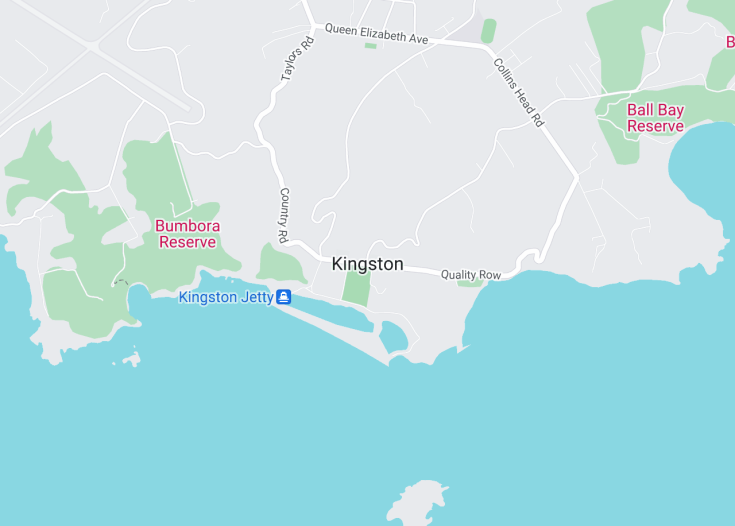Nestled in the heart of Norfolk Island, Kingston offers a blend of fascinating history and serene natural beauty. As one of the island’s distinguished heritage sites, it features a well-preserved convict settlement that dates back to the 18th century. Visitors are treated to picturesque views of lush landscapes and crystal-clear waters that edge against historic ruins. Kingston is not only a window into Australia’s colonial past but also a peaceful retreat for those looking to escape the hustle and bustle of modern life.
When visiting Kingston, ensure to join a guided tour of the historic sites. It’s an invaluable way to understand the complex, layered history of the area.
Plan your visit between April and November for the best weather conditions, ideal for exploring the outdoor heritage sites and enjoying local events.
Kingston: A Hidden Gem in the South Pacific
| Country | Norfolk Island (Australia) |
| Time in Kingston | GMT+11 |
| Language spoken | English |
| Population | 1,748 (2023 estimate, source: Norfolk Island Government) |
| Currency | Australian Dollar (AUD $) |
| Airports | Norfolk Island Airport (1.2 mi / 2 km) |
Kingston is the administrative and historic heart of Norfolk Island, an external territory of Australia located in the Pacific Ocean. The town serves as the island’s capital and is distinguished by its rich colonial history, which dates back to its establishment as a penal colony. Visitors to Kingston are greeted by well-preserved ruins and beautiful Georgian architecture, a testament to the island’s tumultuous past and cultural heritage.
Where is Kingston?
Kingston is situated on the southern coast of Norfolk Island, facing the South Pacific Ocean.
Distances:
| Route | Distance by car | Time by car |
|---|---|---|
| Burnt Pine to Kingston | 2.5 miles (4 km) | 6 minutes |
| Cascade Bay to Kingston | 4.2 miles (6.8 km) | 10 minutes |
| Emily Bay to Kingston | 0.5 miles (0.8 km) | 2 minutes |
What is Kingston famous for?
Kingston is renowned for its historical significance and well-preserved penal settlement sites, including the old convict-built structures and the Kingston and Arthurs Vale Historic Area, which is one of eleven Australian Convict Sites listed as World Heritage by UNESCO.
History
Pre-1788: Polynesian Settlements
The history of Kingston, located on Norfolk Island, begins long before European exploration, with Polynesian settlers believed to have inhabited the island around the 14th or 15th century. These early inhabitants left behind stone tools, which are artifacts that point to their presence, although little is known about their society and the reasons for their eventual disappearance.
1788-1855: Penal Colony Establishment
Kingston’s recorded history commenced with Lieutenant Philip Gidley King, who landed on Norfolk Island in 1788, shortly after the founding of the colony of New South Wales. He established Kingston as a penal settlement, aimed at relieving overcrowded prisons in England and at using the island’s towering Norfolk pines for shipbuilding and flax found on the island for textiles. The Kingston and Arthur’s Vale historic area today reflects much of the gruesome penal settlement history, including stark remnants of the penal colony.
1856: The Arrival of the Pitcairn Islanders
The second penal settlement was eventually abandoned in 1855, and in the following year, descendants of the Bounty mutineers relocated from Pitcairn Island to Norfolk Island. These settlers formed a new community using the abandoned buildings of the penal colony and reshaped the cultural landscape of Kingston, adding a layer of Polynesian heritage intertwined with their unique history related to the Bounty.
20th Century: Strategic Importance and Preservation Efforts
Throughout the 20th century, Kingston gained importance due to its strategic location in the Pacific, especially during the World Wars. However, the end of the Second World War marked a period of peace, and the focus shifted towards preservation and recognition of its rich historical importance. Efforts were made to preserve the historical structures, and the Kingston and Arthur’s Vale Historic Area was listed as a UNESCO World Heritage Site, identifying it as a place of cultural significance largely due to its history of convict deportation and colonial expansion in the Pacific.
Visit Kingston
What to see and do in Kingston, Norfolk Island (Australia)
Kingston, serving as the historical heart of Norfolk Island, offers an array of sights and activities that captivate visitors. The Kingston and Arthur’s Vale Historic Area, a UNESCO World Heritage Site, offers a profound glimpse into the island’s penal colony past with preserved ruins and museums. Tour the old Georgian era buildings, the penal settlement ruins, and the beautiful historic cemetery. Nature enthusiasts can explore the Slaughter Bay and Emily Bay, offering pristine beaches and clear waters ideal for snorkeling and swimming. For those interested in golf, the Norfolk Island Golf Course provides a scenic backdrop against the vast Pacific.
Annual Celebrations in Kingston
In Kingston, the Bounty Day held annually on June 8, commemorates the arrival of the Pitcairn Islanders with a reenactment of the landing. The event is filled with traditional dances, music, and a community feast, providing a deep insight into the local culture and history.
Best time to visit Kingston
The best time to visit Kingston, Norfolk Island, is between November and March when the weather is warm and the conditions are ideal for outdoor activities and exploring the historical sites.
is Kingston worth visiting?
Providing a balanced view, Kingston in Norfolk Island holds a historic allure due to its deep-rooted and diverse heritage. From its grim past as a penal colony to its rich Polynesian connections, the town offers a unique educational experience. However, the remote location might pose challenges for accessibility and can impact the overall travel budget. Despite these challenges, the scenic beauty, preserved history, and tranquil environment make it a meaningful destination for those interested in history and natural beauty.









